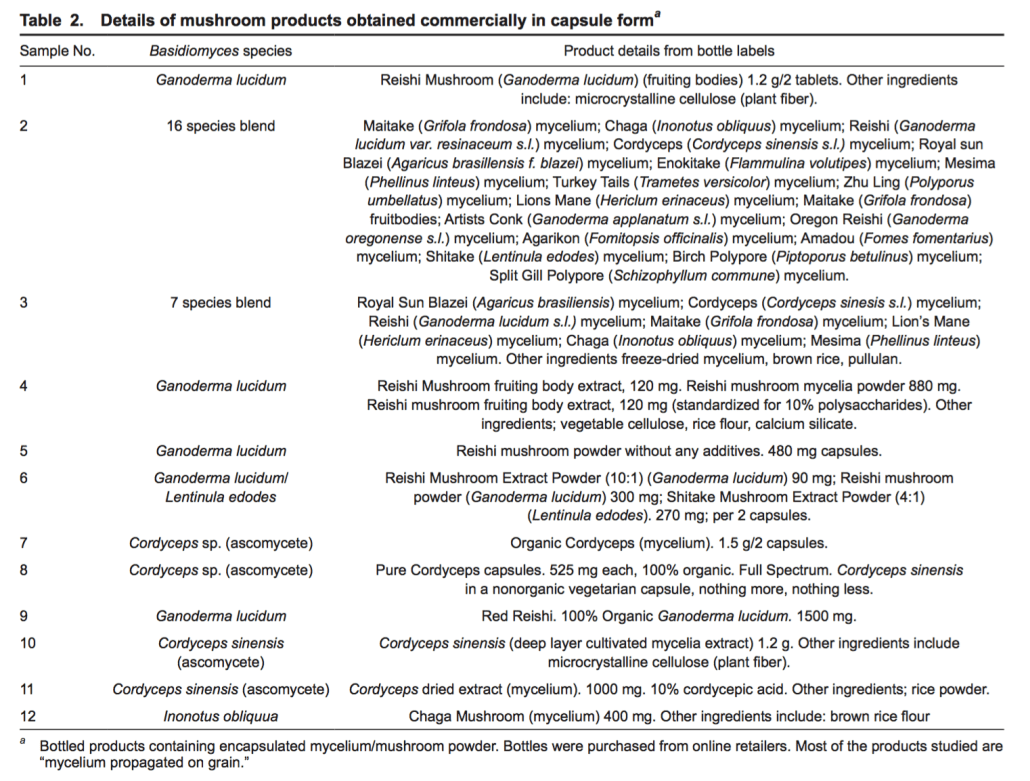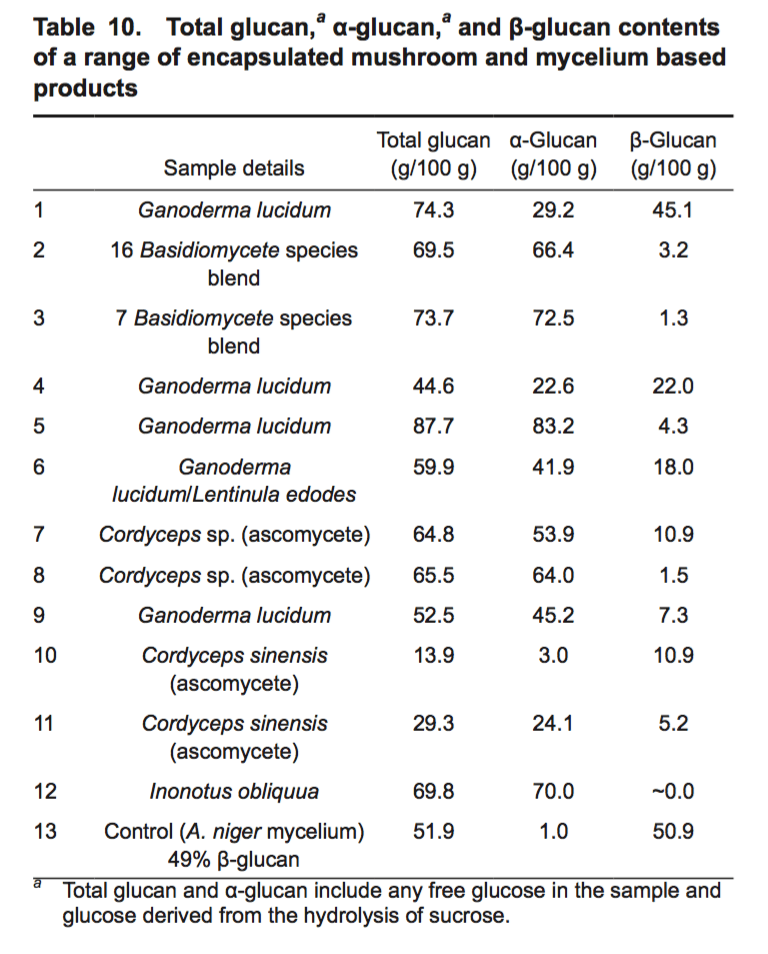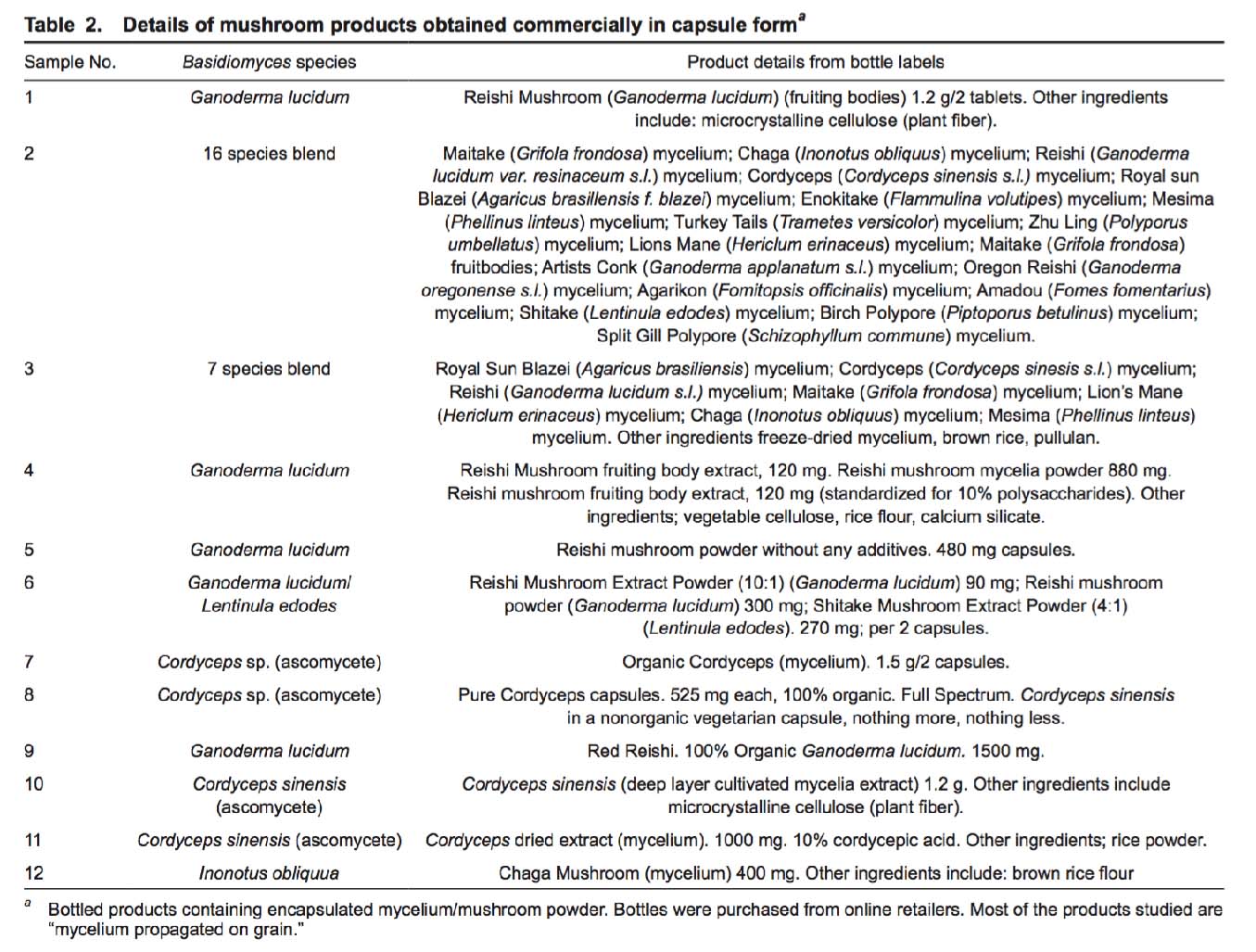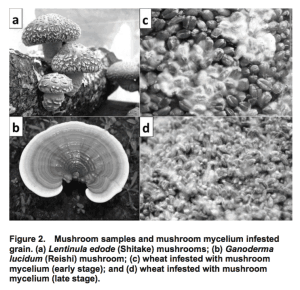A newly published research paper in the peer-reviewed Journal of American Association of Agricultural Chemists, AOAC, the organization that sets and validates the testing standards for all analytical testing, confirmed the findings in Jeff’s Redefining Medicinal Mushrooms, and validated the Megazyme method for beta-glucan testing. The paper is titled “Measurement of β-Glucan in Mushrooms and Mycelial Products” and is written by Dr. Barry McCleary.
Dr. McCleary’s paper examines different testing methods for measuring beta-glucans in basidiomycetes and utilizes whole dried mushrooms and off the shelf retail products as his sample material.
Table 2 shows the retail products tested:

Table 10 shows the testing results:

The alpha-glucan content (starch) in most of these products is extremely high.
Table 2 demonstrates that Product#2 is a mycelium on grain product which shows 66.4% alpha-glucan and 3.2% beta-glucan.
Product#3 also appears to be mycelium on grain with 72.5% alpha-glucan and 1.3% beta-glucan.
Product#8, which claims to be a “full spectrum” Cordyceps sinensis product, shows mostly alpha-glucan, 64.%, and 1.5% beta-glucan. This without question is mycelium on grain.
Product#9, which claims to be "100% organic ganoderma lucidum" shows 45.2% alpha-glucan and 7.3% beta-glucan.
Product#12, which is "Chaga mushroom (mycelium)" with other ingredients of "brown rice flour" shows 70% alpha-glucan and 0.0% beta-glucan.
In Redefining Medicinal Mushrooms we tested grains just to see what their alpha-glucan and beta-glucan content looked like. Our results are as follows:
[av_table purpose='tabular' pricing_table_design='avia_pricing_default' pricing_hidden_cells='' caption='Grain Tests from Redefining Medicinal Mushrooms' responsive_styling='avia_responsive_table' av_uid='av-tbwzll'] [av_row row_style='' av_uid='av-rqqay1'][av_cell col_style='' av_uid='av-ozhru1']Grain[/av_cell][av_cell col_style='' av_uid='av-o94hg9']Alpha-glucan[/av_cell][av_cell col_style='' av_uid='av-2858u1']Beta-glucan[/av_cell][/av_row] [av_row row_style='' av_uid='av-l3fc21'][av_cell col_style='' av_uid='av-io8m89']Rice[/av_cell][av_cell col_style='' av_uid='av-gwnb3t']74%[/av_cell][av_cell col_style='' av_uid='av-fuxhxl']1%[/av_cell][/av_row] [av_row row_style='' av_uid='av-e053ah'][av_cell col_style='' av_uid='av-c3dycp']Oats[/av_cell][av_cell col_style='' av_uid='av-a45v95']58%[/av_cell][av_cell col_style='' av_uid='av-98sje1']1%[/av_cell][/av_row] [av_row row_style='' av_uid='av-7jxtnd'][av_cell col_style='' av_uid='av-5refo9']Sorghum [/av_cell][av_cell col_style='' av_uid='av-42yxrt']64%[/av_cell][av_cell col_style='' av_uid='av-2w287d']2%[/av_cell][/av_row] [/av_table]
Our testing showed that even grain has a small amount of beta-glucans (1-2%). Pure mushrooms have very little amounts of starch, 1-5%.
So for the retail products listed above, how much is actually mushroom and/or mycelium?
The tests results would indicate that there is more grain than fungal tissue.
This peer reviewed research by Dr. McCleary, confirms the test results reported in Redefining Medicinal Mushrooms and should be a wake up call for both companies and consumers. Genuine mushroom products are significantly different in quality, containing high levels of beta-glucans and low levels of alpha-glucans.
As the results above demonstrate, the “mushroom” product you have purchased might be more grain than mushroom.
Full Paper: McCleary & Draga: Journal of AOAC International Vol. 99, no. 2, 2016


